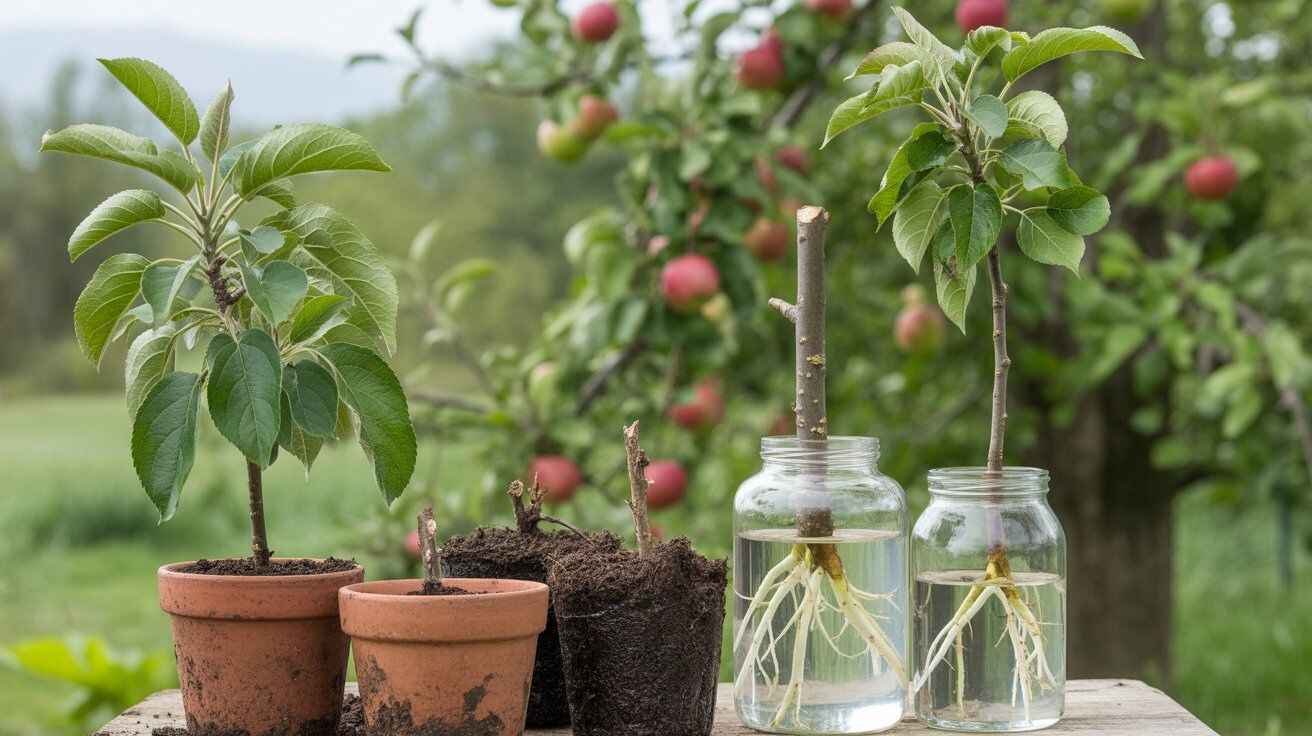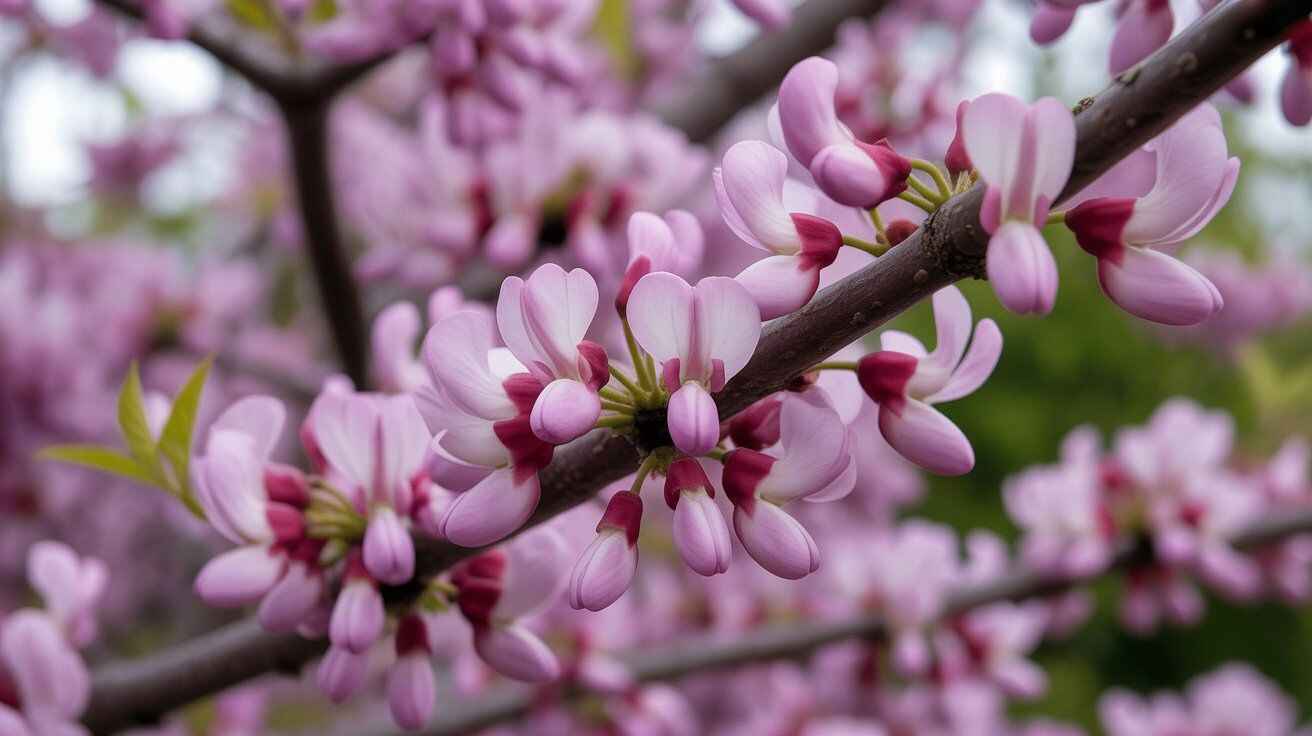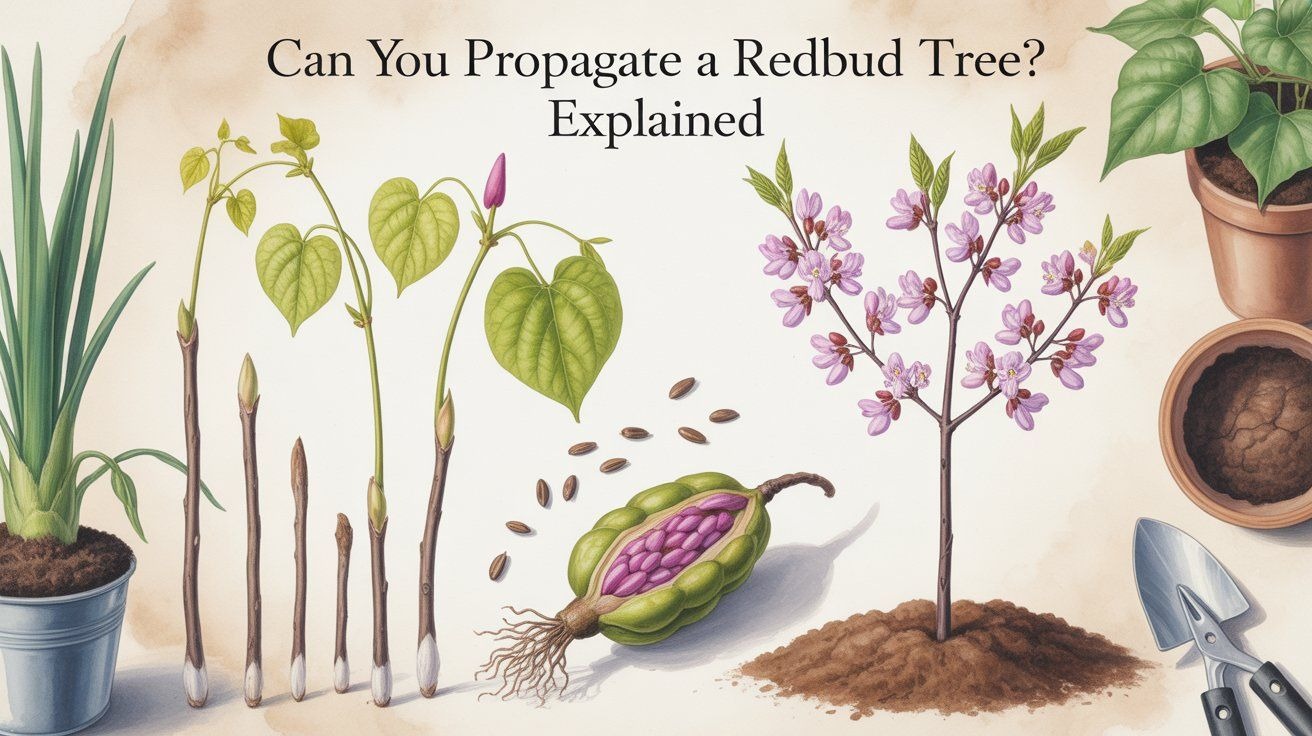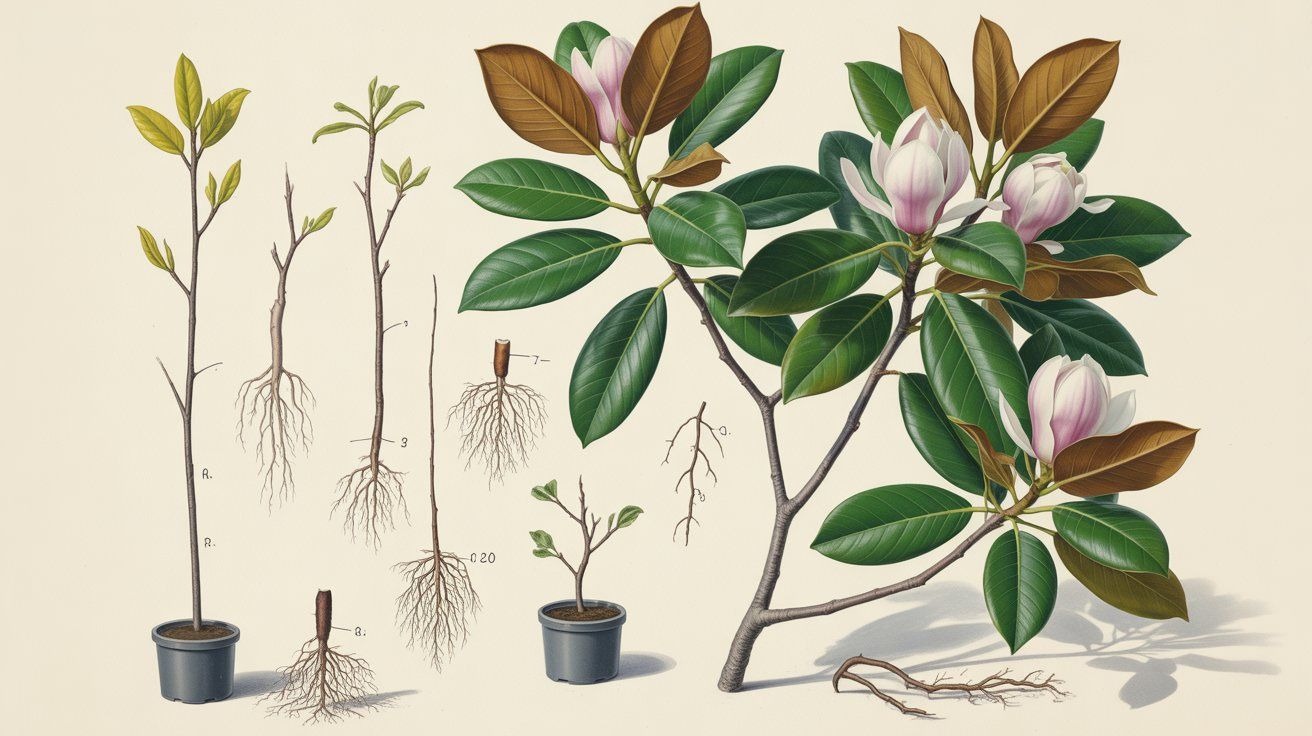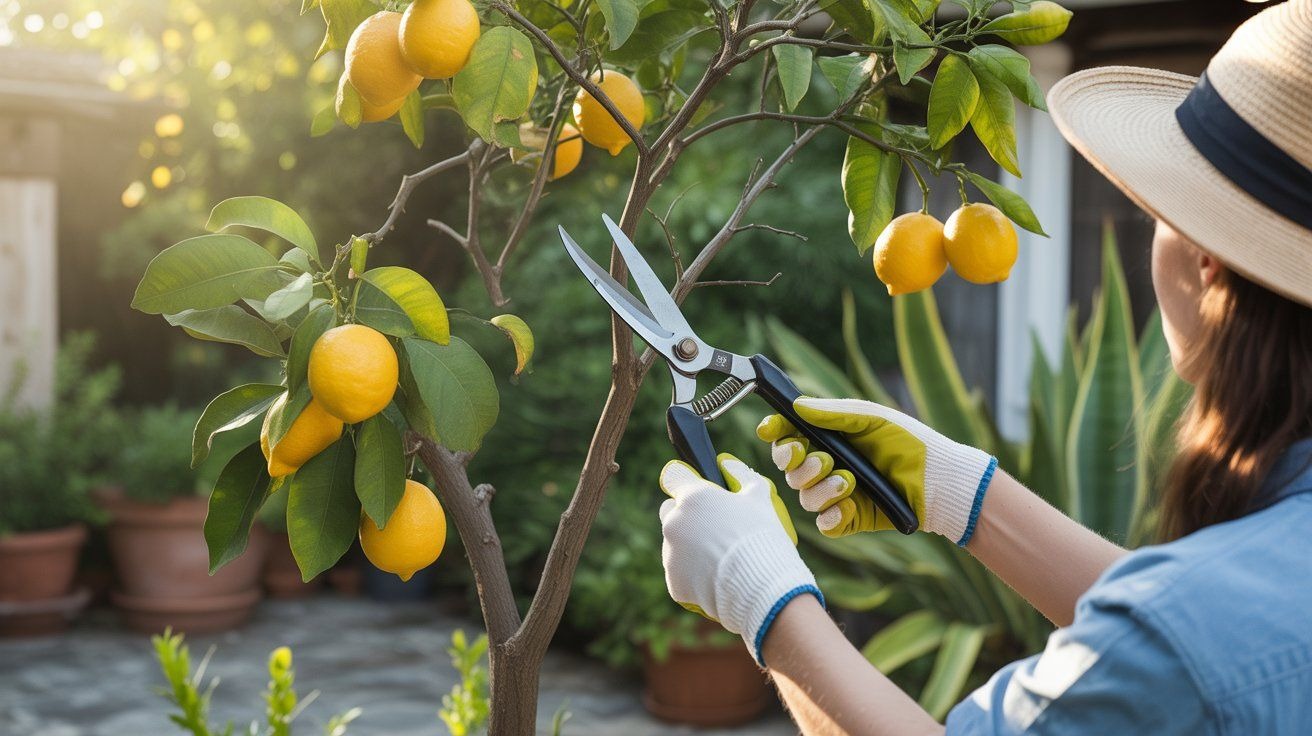Can you propagate apple trees from cuttings? Learn the best methods, tools, and tips to grow healthy new apple trees at home.
Can You Propagate Apple Trees from Cuttings?
Yes, you can propagate apple trees from cuttings, but it’s not the easiest method. Unlike grafting, which has a higher success rate, rooting apple cuttings requires the right environment, timing, and care. Hardwood cuttings taken in late fall or softwood cuttings in early summer are the most viable options.
Using rooting hormone, consistent moisture, and proper temperature control increases the chances of successful growth. While results vary, many gardeners find the process rewarding and worth the effort.
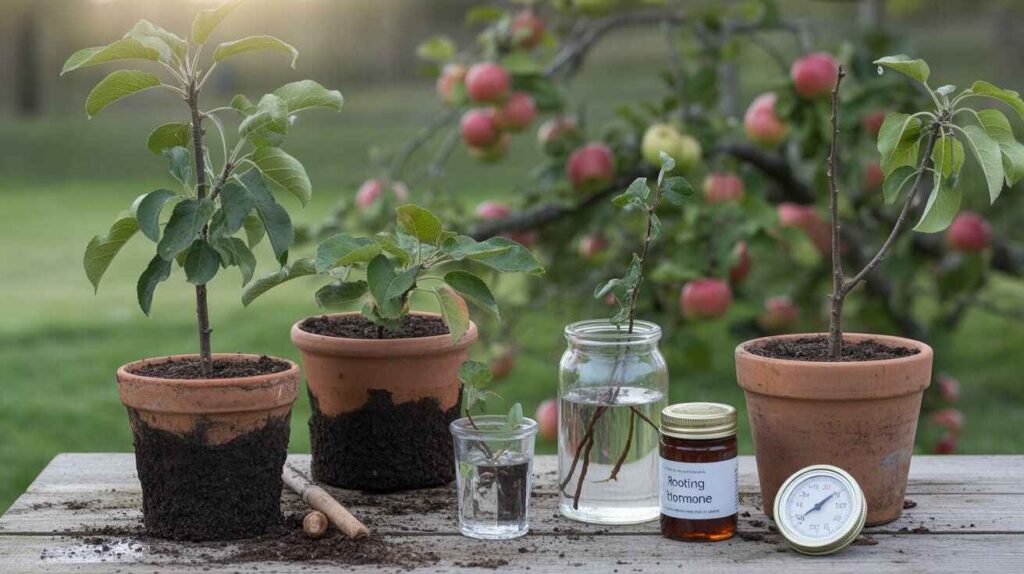
Best Time to Take Apple Tree Cuttings
The best time to take apple tree cuttings depends on the type of cutting you plan to use. Hardwood cuttings are typically taken in late fall to early winter, after the tree has gone dormant. For softwood cuttings, early summer is ideal, when the tree is actively growing but the wood is still flexible.
Timing is crucial because it directly affects root development. Choosing the right season increases the chance of success when propagating apple trees from cuttings.
Step-by-Step Guide to Propagating Apple Trees from Cuttings
To successfully propagate apple trees from cuttings, begin by selecting healthy branches about 6–8 inches long. Make a clean cut just below a node and remove the lower leaves. Coat the cut end with rooting hormone to stimulate root development.
Place the cutting in a well-draining potting mix, keeping the soil consistently moist but not soggy. Covering the container with plastic helps retain humidity, which is essential for root development. Patience is key, as rooting may take several weeks.
Common Mistakes to Avoid When Propagating Apple Trees
| Mistake | What Happens | Impact on Cutting | Better Practice |
|---|---|---|---|
| Using Weak/Diseased Branches | Low vigor and hidden infections | Poor rooting, low survival rate | Select strong, healthy shoots |
| Skipping Rooting Hormone | No stimulation for root cells | Delayed or failed root growth | Always apply rooting hormone before planting |
| Overwatering | Soil stays soggy, lacks oxygen | Rotting of cutting base | Keep soil moist but well-drained |
| Poor Drainage Soil | Waterlogged conditions | Roots suffocate or decay | Use light, well-draining potting mix |
| Low Humidity | Excessive moisture loss | Leaves wilt, cutting dries | Maintain moderate humidity with misting or a cover |
Best Conditions for Propagating Apple Trees
For apple tree cuttings to develop successfully, providing the right environment is essential. The soil should be well-draining yet rich in nutrients, allowing new roots to spread easily. A consistent level of moisture is needed, but the cuttings must never sit in soggy conditions.
Bright, indirect sunlight supports healthy growth without scorching delicate tissues. Maintaining high humidity—often by covering cuttings with a plastic dome or bag—improves survival rates. Together, these conditions create an ideal balance that helps cuttings establish strong roots.
Success Rates of Apple Tree Propagation
When asking if you can propagate apple trees from cuttings, it’s important to know the success rate is relatively low compared to grafting. Cuttings may root, but many fail to thrive or produce weak trees. Factors like the season, cutting health, and aftercare significantly influence results.
Even under ideal conditions, only a small percentage of cuttings survive long term. This is why grafting remains the preferred method for consistent, healthy apple trees with reliable fruit production.
Advantages and Disadvantages of Propagating from Cuttings
Trying to propagate apple trees from cuttings offers some clear advantages. It’s cost-effective, requires minimal tools, and can be done by beginners who enjoy experimenting with plant growth. However, the drawbacks often outweigh the benefits
Cuttings generally have low survival rates, may take years to mature, and don’t guarantee identical fruit quality. Without grafting onto a hardy rootstock, these trees can also be vulnerable to disease and poor soil conditions. Understanding both sides helps gardeners choose the right method.
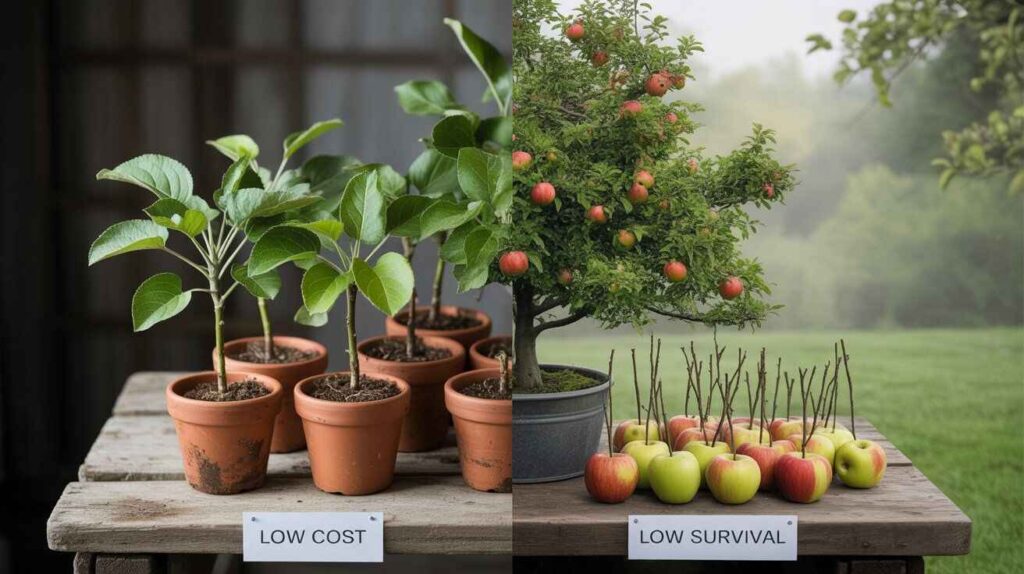
Common Mistakes and Troubleshooting in Propagation
When attempting to propagate apple trees from cuttings, many gardeners make avoidable mistakes. Using old or unhealthy cuttings reduces the chance of root formation. Overwatering is another frequent issue, as excess moisture can cause rot before roots establish.
Conversely, letting the soil dry out halts growth. Inadequate light or temperature fluctuations also stress the cuttings. To troubleshoot, always select fresh wood, maintain balanced watering, and provide stable conditions. Attention to detail greatly improves the likelihood of successful propagation.
Alternative Propagation Methods for Apple Trees
While propagating apple trees from cuttings is possible, gardeners often achieve better results with alternative methods. Grafting is the most reliable, allowing a desired variety to be joined to a hardy rootstock for strength and disease resistance.
Another option is growing from seeds, though this produces trees with unpredictable fruit quality. Air layering is less common but can yield stronger root systems than cuttings. Exploring these methods helps ensure healthier trees and consistent fruit production over time.
Timeframe for Growth and Fruiting
When propagating apple trees from cuttings, patience is essential because the timeframe for growth and fruiting can be long. Even if a cutting successfully roots, it may take several years before the tree produces blossoms or fruit.
Unlike grafted trees, which can bear fruit sooner, cutting-grown apple trees often mature slowly. Gardeners should also expect variability in fruit quality and yield. Understanding this extended timeline helps set realistic expectations and prevents disappointment when choosing this propagation method.
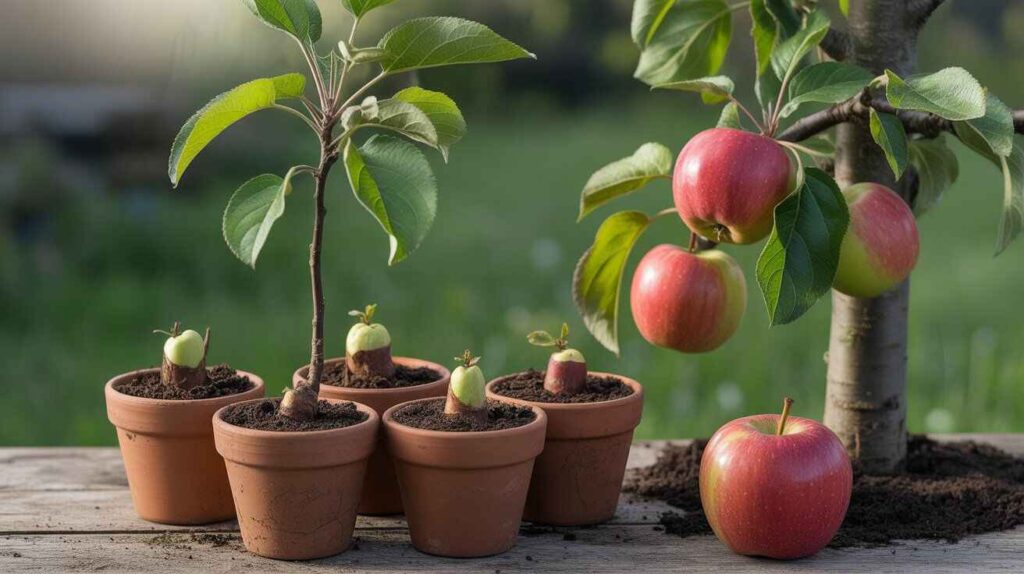
Care Tips for Young Propagated Apple Trees
Once an apple tree grows from cuttings, proper care is critical for survival and long-term health. Young trees need consistent watering to keep soil moist but not soggy. Mulching around the base helps retain moisture and regulate temperature.
Adequate sunlight—at least six hours daily—supports strong development. Regular monitoring for pests and disease ensures early intervention if problems arise. Providing structural support, like stakes, can also protect delicate trunks. With attentive care, young propagated apple trees have a stronger chance of thriving.
Frequently Asked Questions
Can you propagate apple trees from cuttings?
Yes, apple tree cuttings can root, but success rates are low compared to grafting.
How long do cuttings take to root?
With proper conditions, cuttings may take several weeks to months before roots develop.
Is grafting better than cuttings?
Yes, grafting produces stronger, more reliable trees with consistent fruit.
Do apple trees from cuttings bear fruit?
They can, but fruiting often takes years and may vary in quality compared to grafted trees.

Jhanzaib Khan, with over 50 years of dedication to nature and tree conservation, is a leading authority in the world of trees and environmental care. From his early years exploring forests to guiding communities in sustainable tree planting, Jhanzaib has combined hands-on experience with a lifelong passion for the environment. He specializes in tree species identification, tree care, forest management, and environmental awareness. His insights have been featured in multiple nature blogs, workshops, and local conservation projects.

